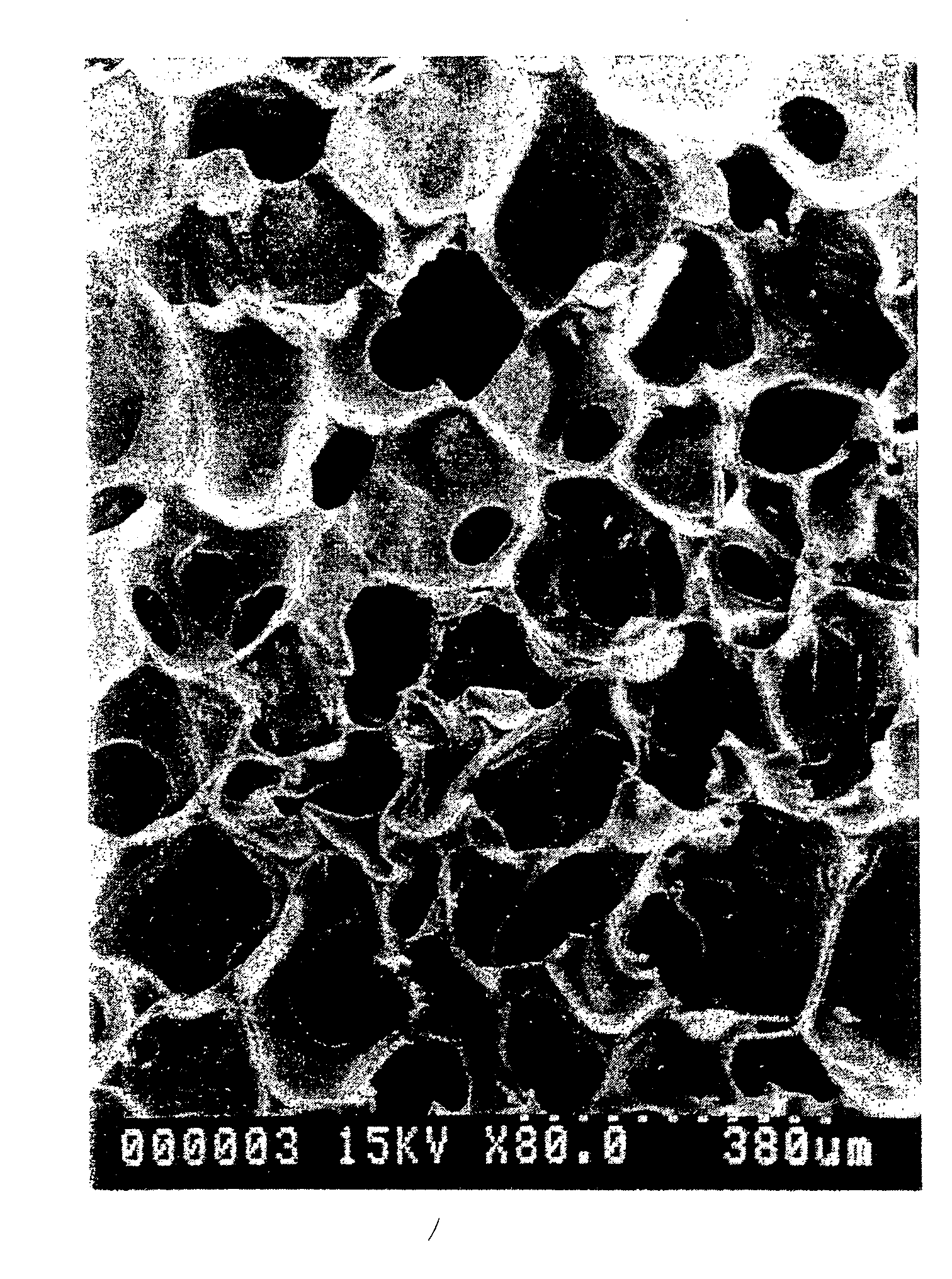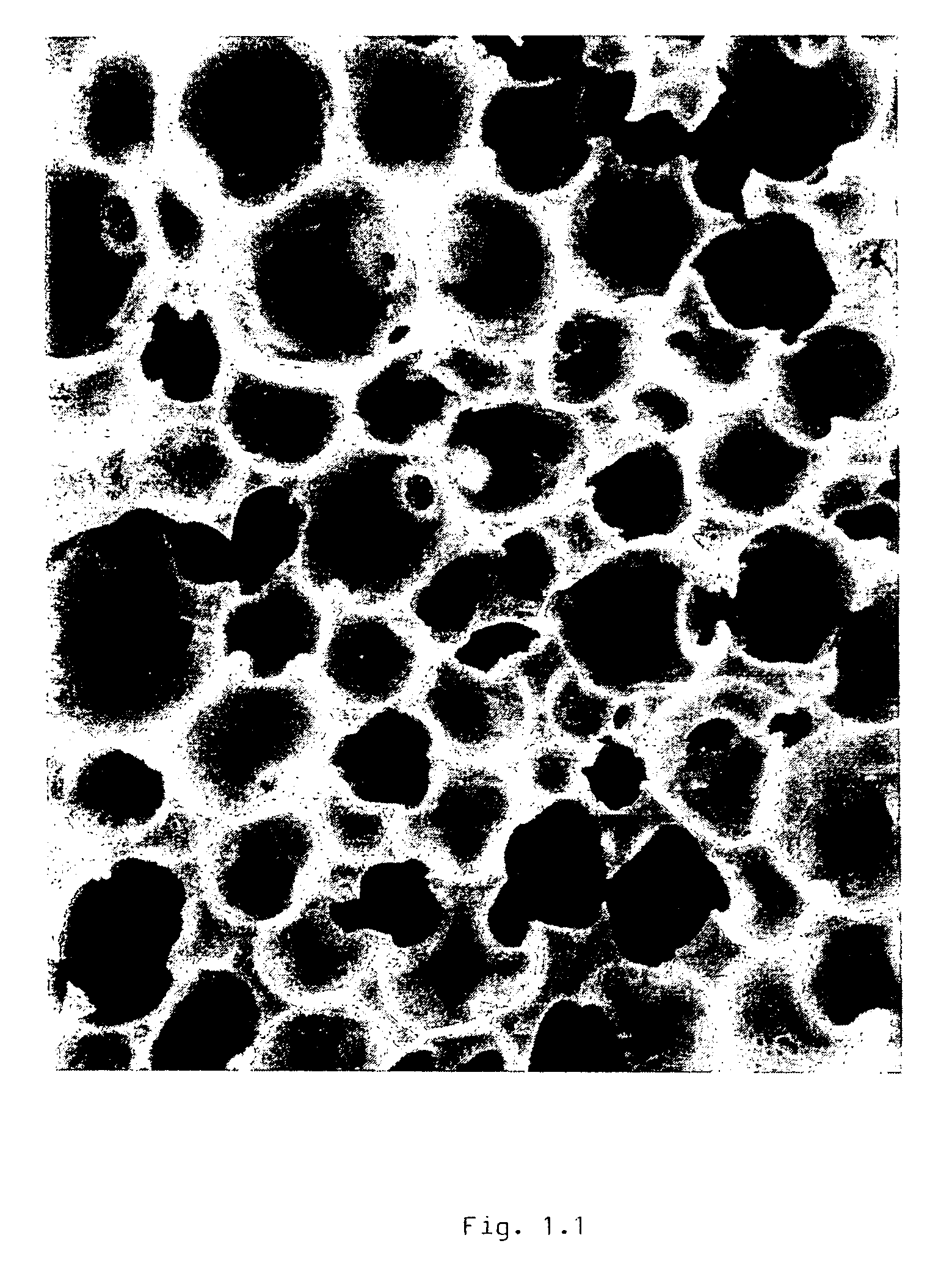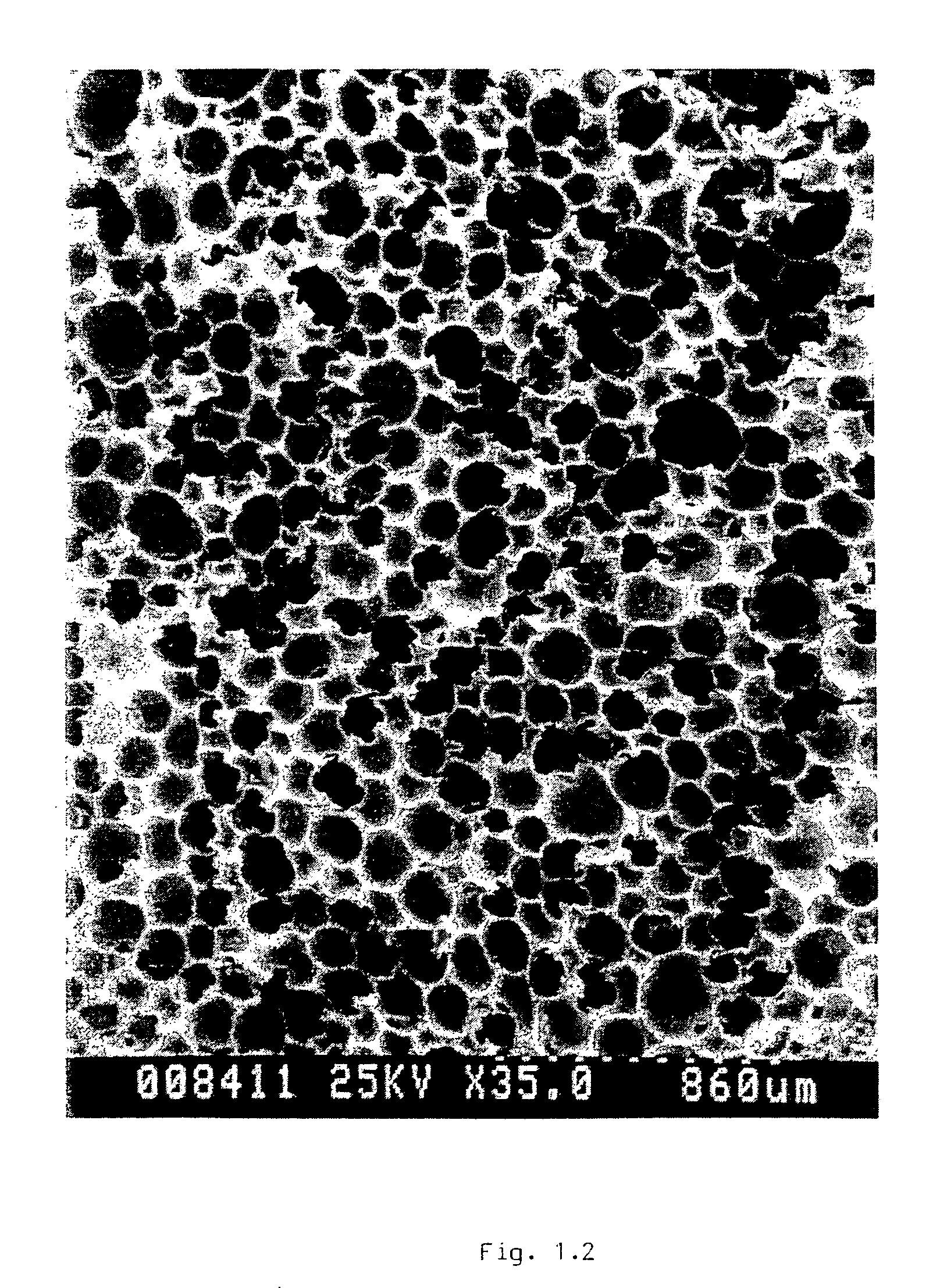Tissue engineering scaffold
a tissue engineering and scaffold technology, applied in the field of tissue engineering scaffolds, can solve the problems of difficult to provide a scaffold suitable for a range of applications, many complex problems to be overcome, and the attempts to produce 3 dimensional scaffolds of polymeric materials have not been entirely successful, so as to promote a highly desirable host response and reduce the effect of bioresorption
- Summary
- Abstract
- Description
- Claims
- Application Information
AI Technical Summary
Benefits of technology
Problems solved by technology
Method used
Image
Examples
examples
[0177] The unique features of the tissue engineering scaffolds of this invention will be demonstrated by the following examples.
example a
[0178] For the preparation of polyether urethane tissue engineering scaffold a polyol resin and an isocyanate pre-polymer are prepared. In the preparation of the polyol resin the following raw materials are added to a heated round bottom flask and mixed;
Raw materialFunctionQuantity (php)PTMEG (MW 1000)1Polyol100Triethanolamine2Cross-linking agent4.6Water3Blowing agent2.561,4 Butanediol4Chain extender8.05BF 22705Surfactant1.0RC Catalyst 1056Gelling catalyst2.96Desmorapid PP7Blowing catalyst0.34Kac / Deg8Trimerisation catalyst0.73
1Terathane (Du Pont)
2Sigma Aldrich
3Sigma Aldrich
4Sigma Aldrich
5Th GoldSchmidt
6DABCO and Diethylene Glycol (Rhein Chemie) at a ratio of 33.3:66.7
7Whitchem
8Potassium acetate and Diethylene Glycol (Sigma Aldrich) at a ratio of 30:70
[0179] The materials are mixed at 50 to 60° C. for a minimum of 25-30 minutes.
[0180] An isocyanate pre-polymer with an NCO content of 15.6% was prepared by charging flake MDI (Desmodur 44M flakes from Bayer with a 2,4′-isomer...
example b
[0202] For preparation of a polycarbonate urethane tissue engineering scaffold a polyol resin and an isocyanate pre-polymer are prepared as in Example A.
QuantityRaw materialFunction(php)Polycarbonate CX 5510 (MW 1000)1Polyol100Triethanolamine2Cross-linking agent3.6Water3Blowing agent3.0BF 22705Surfactant1.2RC Catalyst 1055Gelling catalyst1.66DABCO BL 116Blowing catalyst0.8Kac / Deg7Trimerisation catalyst0.73
1Nissei Chemical Company, Japan.
2Sigma Aldrich
3Sigma Aldrich
4Th GoldSchmidt
5DABCO and Diethylene Glycol (Rhein Chemie) at a ratio of 33.3:66.7
6Air Products
7Potassium acetate and Diethylene Glycol (Sigma Aldrich) at a ratio of 30:70
[0203] The isocyanate pre-polymer was prepared as per Example 1 using Polycarbonate CX 5510 (MW 1000) to produce a pre-polymer with an isocyanate content of 15.6%.
[0204] Polycarbonate CX5510 is a random co-polymer comprising penta methylene carbonate and hexa methylene carbonate sequences of 1000 MW.
[0205] The materials were mixed at an isocyan...
PUM
| Property | Measurement | Unit |
|---|---|---|
| void mean diameter | aaaaa | aaaaa |
| void mean diameter | aaaaa | aaaaa |
| void mean diameter | aaaaa | aaaaa |
Abstract
Description
Claims
Application Information
 Login to View More
Login to View More - R&D
- Intellectual Property
- Life Sciences
- Materials
- Tech Scout
- Unparalleled Data Quality
- Higher Quality Content
- 60% Fewer Hallucinations
Browse by: Latest US Patents, China's latest patents, Technical Efficacy Thesaurus, Application Domain, Technology Topic, Popular Technical Reports.
© 2025 PatSnap. All rights reserved.Legal|Privacy policy|Modern Slavery Act Transparency Statement|Sitemap|About US| Contact US: help@patsnap.com



